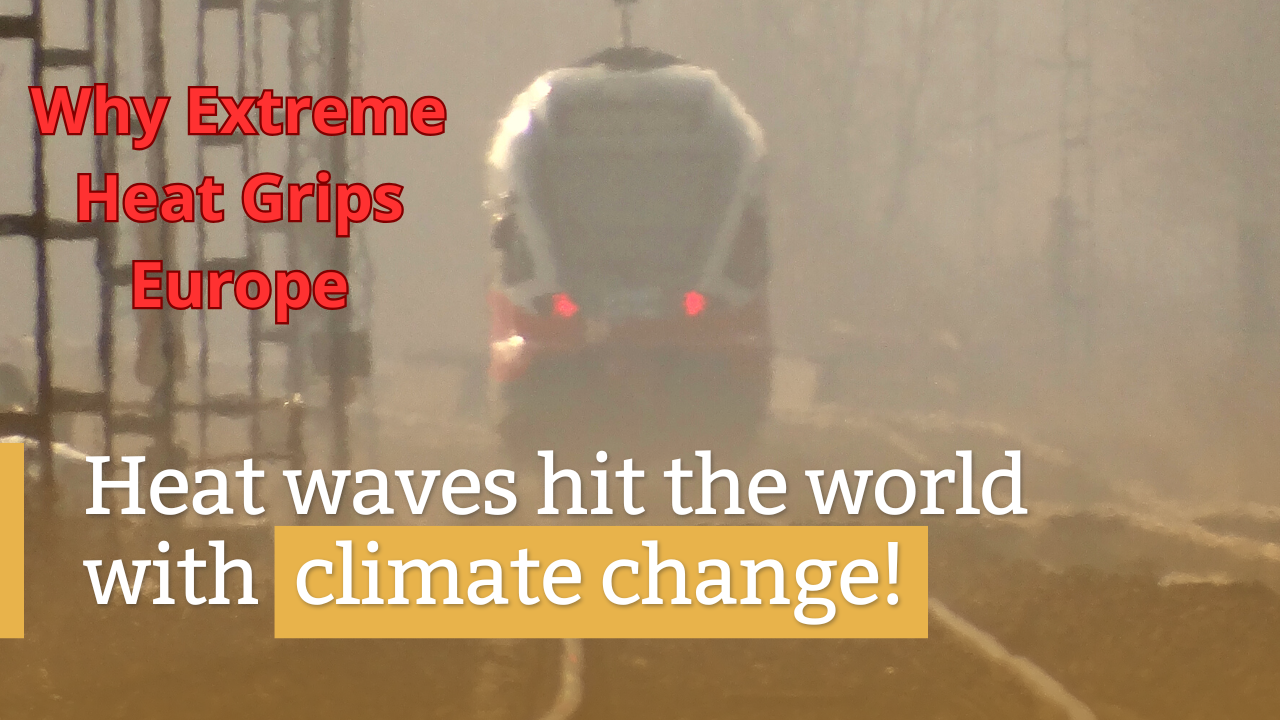☀️ Why Extreme Heat Grips Europe
There are many reasons why extreme heat grips Europe.
🔥 Background: Why Europe is Feeling the Heat
Europe has been warming at nearly twice the global average over recent decades. This rise in temperatures has led to hotter summers and more frequent heat waves. Scientists point to greenhouse gas emissions and climate change as key drivers
In June 2025, Europe experienced one of its hottest months on record. Cities across the continent saw temperatures soar past 40 °C, with extremes like 46.6 °C recorded in northern Portugal—a June record. Meanwhile, the Mediterranean Sea even reached 30 °C, about six degrees above normal
📍 Current Situation: Where the Heat Is Hitting Hard

As of early July:
-
Spain, France, Italy, Portugal, Greece, Turkey, and others are under intense heat alerts.
-
Cities like Seville, Madrid, Paris, and Lisbon suburbs have recorded 40–46 °C temperatures
-
Wildfires are raging: Crete (Greece), southern France, Spain, and large areas in Turkey have seen massive evacuations—over 50 000 people in Turkey alone .
-
At least eight heat-related deaths: Spain, France, Italy, and Hungary have reported fatalities
⚠️ Impacts & Risks
-
Public health threats
Vulnerable groups—elderly, children, outdoor workers—face heat exhaustion and risk of death. The Red Cross has warned this is Europe’s “new reality” . -
Wildfires
Drought and record temperatures are fueling wildfires. Firefighters are stretched thin across the Mediterranean . -
Infrastructure strain
-
Nuclear power plants have reduced output or temporarily shut due to overheating water used for cooling .
-
Rivers like the Rhine and Danube face low water levels, disrupting shipping and raising transport costs .
-
-
Energy grid pressures
Surging demand for air conditioning—up to 14% higher daily—combined with power plant outages has spiked electricity prices by over 100–175% in certain countries .
🌍 The Climate Connection
Scientists stress that these heat waves are not anomalies—but look to be the new norm. The World Meteorological Organization confirms heatwaves are more intense and frequent due to climate change.
Europe’s recent warmest year on record (2024) saw extreme heat days and tropical nights escalate dramatically
🛡️ What’s Being Done
-
Red and orange alerts are in place in multiple countries, with advisories to stay hydrated, avoid midday sun, and seek shade
-
Schools, tourist sites (like the Eiffel Tower), and rail services have adjusted hours or closed temporarily to protect people and infrastructure .
-
Humanitarian and relief efforts: Red Cross teams are distributing water and opening cooling centers
-
Energy sector actions: Increased solar power and inter-country grid coordination are helping stabilize supply .
📝 Final Take
Europe is enduring a serious, early-summer heat wave that’s testing public health systems, energy infrastructure, and disaster response. With global warming continuing, such extremes may become the new normal. Experts urge adaptation measures—like improved cooling centers, flexible power grids, and better wildfire preparedness—to keep people safe.


















